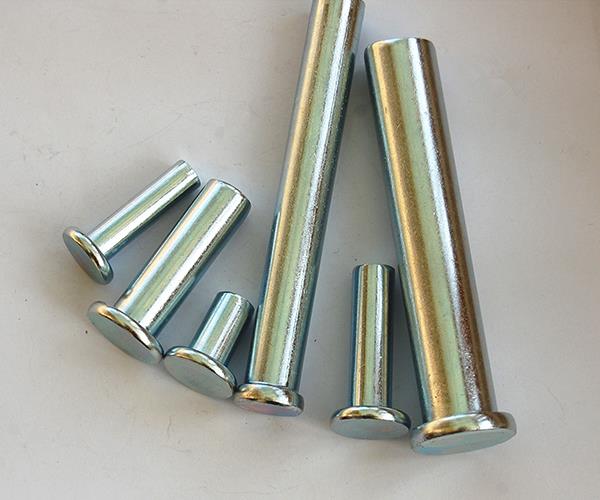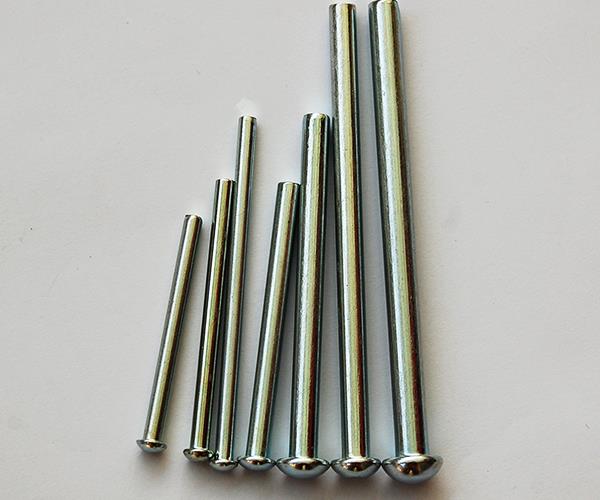Qingdao Haorui Steel Products Co., Ltd.
Mob: 15966945003
Contact: Yanan Wang
Tel: 0532-87881070
Fax: 0532-87980111
Email: wang@qdhaorui.com
Add: No. 375, Zhengyang East Road, Xifu Town, Chengyang District, Qingdao
The riveting process of common non-standard rivets
Non-standard rivetsIt is a metal tube or metal tube used to fasten the connection of two metal materials face-to-face, riveting separate cold rivets and hot rivets, MaoShiMao rivet hammer at room temperature: hot riveting connection requirements are higher, such as railway bridge girder riveting, pre- The heat is in the hot rivet, the hot rivet passes through the rivet hole, after the rivet head, the shrinkage stress during the cooling process will make the connection tighter, which is mainly concerned with the underlying cold rivet (shaft).
Commonly used materials for non-standard rivets: SUS303, SUS416, quick-cutting iron (SUM24L, SUM22D), copper, etc. If the material is SUS416, fast cutting iron, the processed rivets should be electroplated.

Riveting characteristics of non-standard rivets
1. Pressure riveting features: the riveting is simple, no special riveting fixture is needed, and it can even be riveted by hand. But it is only suitable for the situation that the torque requirement after riveting is not high, the radial force is not high, and the verticality is not high.
2. Riveting characteristics: same as pressure riveting, the radial force is better than pressure riveting, but the requirements for riveting materials and riveting fixtures are higher, otherwise flanging cracks are likely to occur.
3. Riveting characteristics: special riveting equipment and riveting jigs are required, which are suitable for products with large torque, large radial force, and high vertical requirements, but not for thin materials (generally not used below 0.8mm).
4. Welding and welding characteristics: products with high torque and thrust requirements can be welded, but the products are susceptible to thermal deformation and expansion of welding. In addition, welding and welding are special processes, and there is a hidden danger of falling off.

Pay attention to the use of non-standard rivet processing
1. The outer diameter of the rivet tail cannot be greater than the outer diameter of the rivet head, otherwise the rivet head will be stretched when the rivet rotates;
2. The height of the rivet tail is generally not more than 1mm, and the height of the rivet tail is allowed to protrude by 0.3-0.5mm to ensure sufficient torque.
3. The thickness of the rivet step shall not be less than 1MM, otherwise the rivet will be easily stretched during the riveting process;
4. During the riveting process, the pressure of the equipment, the riveting time and the size of the lower die hole will all affect the torque size (perpendicularity, outer diameter) after riveting is very important.
5. Rivet cutting should not be designed as extrusion with flower teeth at the tail.



